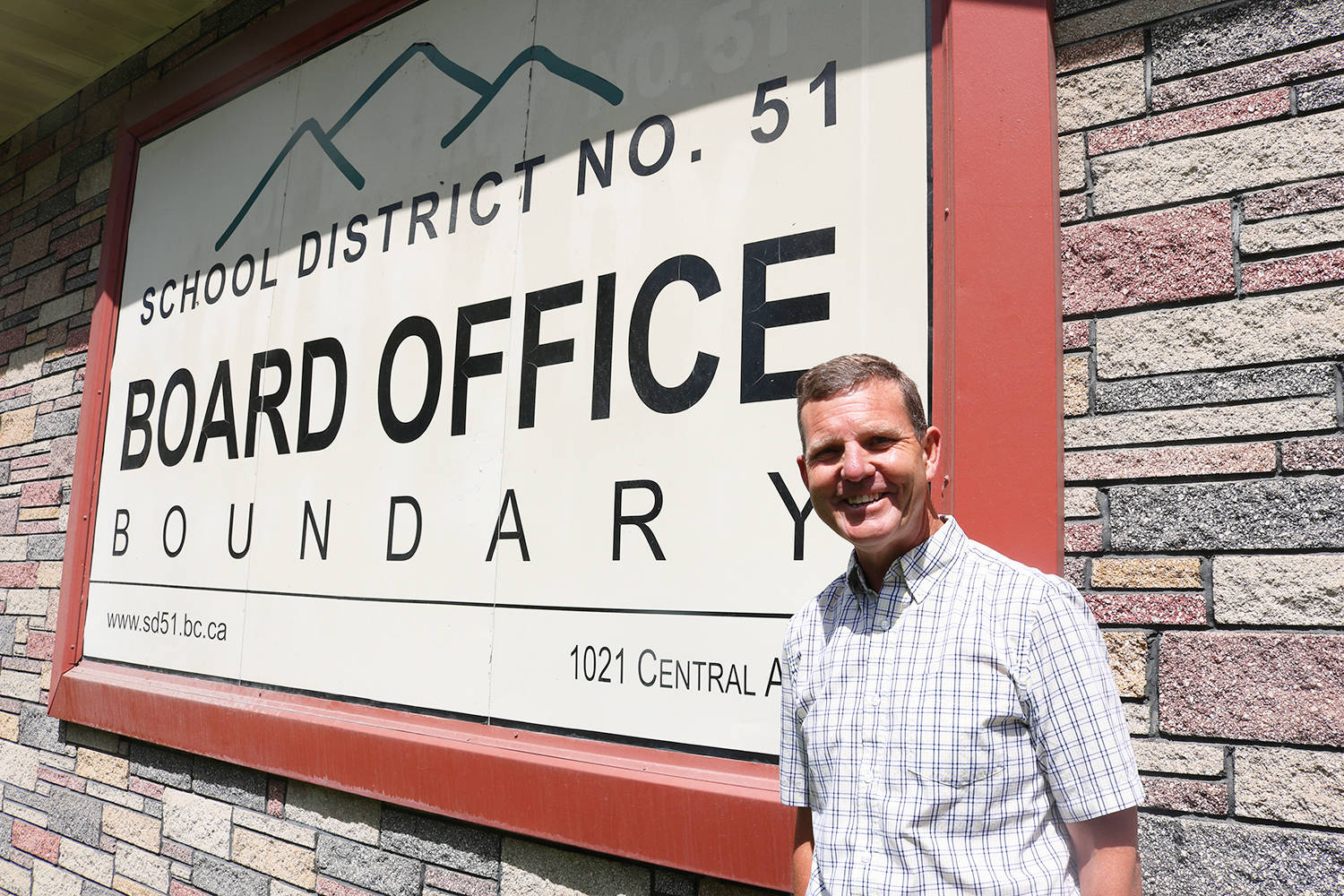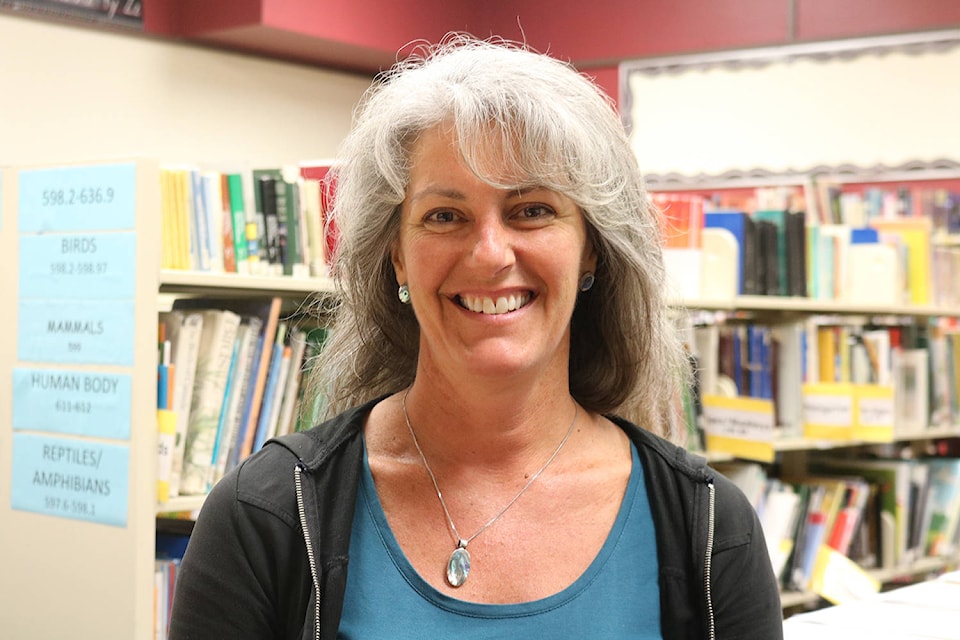The school year wrap-up can give off an odd feeling. There’s a sense of accomplishment (“Yay! We’re done!”) that is often followed by a sense of “Now what?”
For Joanne Gidney, “It’s lots of reflection on the kids and where they’ve come from when we first met them in September to see them walk out the door, confident in all the ways that they’ve grown and changed.” Gidney was, until very recently, the district’s vice-principal of student services but now she’s headed out the door too, this time for good, after 32 years of service in the Boundary.
“It’s great to have worked in one community my whole career because I’ve gotten to see these children become adults, and they come back to their home school with their own children,” Gidney said. While she’s devoted her career to creating familiar and safe learning environments, for the special education teacher from Fort St. John, Grand Forks was anything but familiar when she first started.
“It was a job offer,” she said. “I was 24 years old, knew nothing and was looking for adventure.” What she found instead was an opportunity to revolutionize the way special education was done in the district at the time. When Gidney first started, she said, some children were being taught in segregated classrooms.
“If you had a physical disability or a cognitive ability,” she explained, “you came to one classroom and we were siloed unto ourselves.” Shortly after she began, that strategy changed and brought about its own challenges.
“There’s no easy way to make accommodations for children to be in classrooms where they have unique needs,” Gidney said. In accommodating and educating what she called “neuro-typical” peers, Gidney said that new community formed.
“The peer relationships that develop is probably the most exciting part,” she said of the inclusive approach to education. Kids became curious about what it means to have speech impediments and spinal bifida and use a wheelchair and in it all, Gidney said, she has seen “a greater sense of community because we are all diverse.”
In fact, it was one of Gidney’s own teachers that got her caught up in the idea of becoming an inclusive educator. Two of Gidney’s Grade 6 peers used American Sign Language to communicate (in a segregated classroom) but her teacher wanted the two children to socialize and integrate with their peers.
“I just really enjoyed learning the sign language and meeting these young people that were not a part of the mainstream classrooms,” Gidney said. “I think that started to fuel my curiosity.”
Another pioneer of inclusion and integrated classrooms is retiring from SD 51 this year as well. Director of Learning Doug Lacey is packing up his school district office after more than 20 years in the district as a principal and director. Beyond inclusion, it was tweaking the model for middle school in Dawson Creek in the 1980s that fuelled Lacey’s early career.
“We were trying to move away the junior-high model,” said Lacey. Instead, students stayed with the same teacher for their core classes, which, Lacey said, allowed them to develop good relationships with their teachers — something that was rarely considered in the day.
“It’s the social-emotional piece,” said Lacey, and it’s a concept that has become core to his philosophy through his career in the Boundary. By looking out for what he calls “the whole child,” Lacey said, the philosophy shifts weight away from the purely academic.
“Now,” Lacey said, “if you ask a teacher about a child, the first thing they’re going to say is not about how good they are academically. It’s going to be more about the whole child.”
But, Lacey said, philosophy only goes so far. At a point, it is up to the teachers to ensure that students are being looked after and appreciated in all their strengths. Several years ago Ministry of Education representatives came to SD 51 to figure out why the district’s graduation rates were so high. They called the Boundary a “value-added district” and asked Lacey and the superintendent how they were doing so well.
“We couldn’t come up with anything except caring, compassionate educators and support staff,” Lacey said. “That’s all it was — that they care.”
Like Terry Nuyten of Grand Forks Secondary School, Lacey suggested, another SD 51 educator retiring this summer.
“He would be a brilliant example of a teacher who knows every single kid that’s in his class, takes an interest in them and is joyful with them.”
While Gidney and Lacey mull the place they are leaving, they insist that they won’t be short of things to do in their time off.
“If you ask anybody,” said Lacey, “they’ll tell you I’m never short of activities,” whether it be biking, golfing or visiting family across the country.
“My husband has been waiting for me to retire [for 13 years] so we can head off and have adventures,” said Gidney on her future plans. “I was born in B.C. and have never seen half of it, so it’s time just to start to put some toys in the truck and go exploring.”
In the meantime, Gidney said, “I feel like I’m leaving a team of people who care for kids behind me.”

